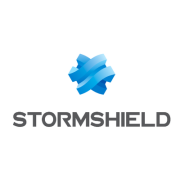Unified Threat Management combines multiple security functions into one solution to simplify network defense, offering firewall, intrusion detection, and antivirus capabilities in a single appliance.
With modern cybersecurity challenges, Unified Threat Management streamlines security by consolidating several solutions, reducing complexity, and improving manageability. This integrated approach helps organizations safeguard against a range of threats, enhancing protection without compromising performance. Real users appreciate the flexibility and customization, which allow tailored security policies that align with specific organizational needs.
What are the critical features of UTM?In financial services, implementation adapts to stringent regulatory requirements, offering detailed reporting and audit capabilities for compliance. In healthcare, it secures sensitive patient data, adhering to privacy regulations while maintaining operational efficiency. Retail businesses benefit from UTM by securing transactions and protecting customer information, essential for maintaining trust and avoiding data breaches.
Unified Threat Management assists organizations by streamlining their security operations. It merges varied security tools into one solution, enhancing their defense strategy and allowing IT teams to focus on more strategic initiatives. This robust approach to network security simplifies complex environments, promoting a more secure enterprise posture.




























Originally, firewalls only filtered traffic based on ports & IP addresses. They evolved over time to become “stateful,” which means that they keep track of the state of network connections passing through the appliance. However, as cyber threats also evolved and diversified, organizations began to deploy multiple appliances to defend against different classes of attacks. They now needed:
As more threats evolved, new types of appliances and services were created to meet the challenge. It was too difficult for the traditional stateful appliance approach to scale along with growing businesses.
An antivirus tool like a firewall just protects PCs and servers. Next-generation firewalls (NGFWs) are more effective than traditional firewalls, but they still lack critical features for detecting and responding to all the latest threats. Therefore, UTM systems are used to protect the entire network, as well as individual users. It does this by scanning all network traffic, filtering any potentially dangerous content, and then blocking intrusions.
A Unified Threat Management solution benefits small businesses by consolidating various security functions into a single device, making it easier to manage and cost-effective. It provides comprehensive protection through features like firewall, antivirus, intrusion prevention, and content filtering, reducing the need for multiple security products. UTM solutions are scalable as your business grows, providing peace of mind with robust security without needing a large IT department.
What are the key features to look for in a Unified Threat Management solution?When choosing a Unified Threat Management solution, look for essential features such as a robust firewall, VPN capabilities, antivirus and anti-malware protection, intrusion prevention systems (IPS), content filtering, and email security. Consider solutions with user-friendly management interfaces and reporting tools to easily monitor and manage network security. Scalability and support for remote users are also crucial for growing businesses.
Can Unified Threat Management solutions integrate with cloud services?Yes, Unified Threat Management solutions can integrate with cloud services to extend security measures beyond on-premises networks. This capability ensures consistent policy enforcement and visibility across different environments. UTM solutions offer cloud integration features like secure VPN connections and centralized management, enabling you to protect data and applications in the cloud effectively. Opt for a UTM solution that seamlessly works with leading cloud service providers to safeguard your cloud-based assets.
What are the challenges of implementing a Unified Threat Management solution?Implementing a Unified Threat Management solution can present challenges such as potential disruptions during deployment, especially in existing and complex networks. Ensuring the chosen solution meets regulatory compliance standards and does not bottleneck network performance can also be challenging. You should work with experienced IT professionals or vendors who provide comprehensive support and training. Addressing these challenges ensures a smooth transition and effective security integration.
How does a Unified Threat Management solution differ from a Next-Generation Firewall (NGFW)?While both Unified Threat Management solutions and Next-Generation Firewalls offer comprehensive security, UTMs typically provide a broader range of bundled security features, including antivirus, spam filtering, and content filtering in addition to firewall capabilities. NGFWs focus more on advanced firewall functionalities, such as application awareness and control, intrusion prevention, and advanced threat protection. UTMs are often preferred by small to medium-sized businesses due to their all-in-one convenience and cost-effectiveness, whereas NGFWs are ideal for organizations needing more sophisticated firewall features.